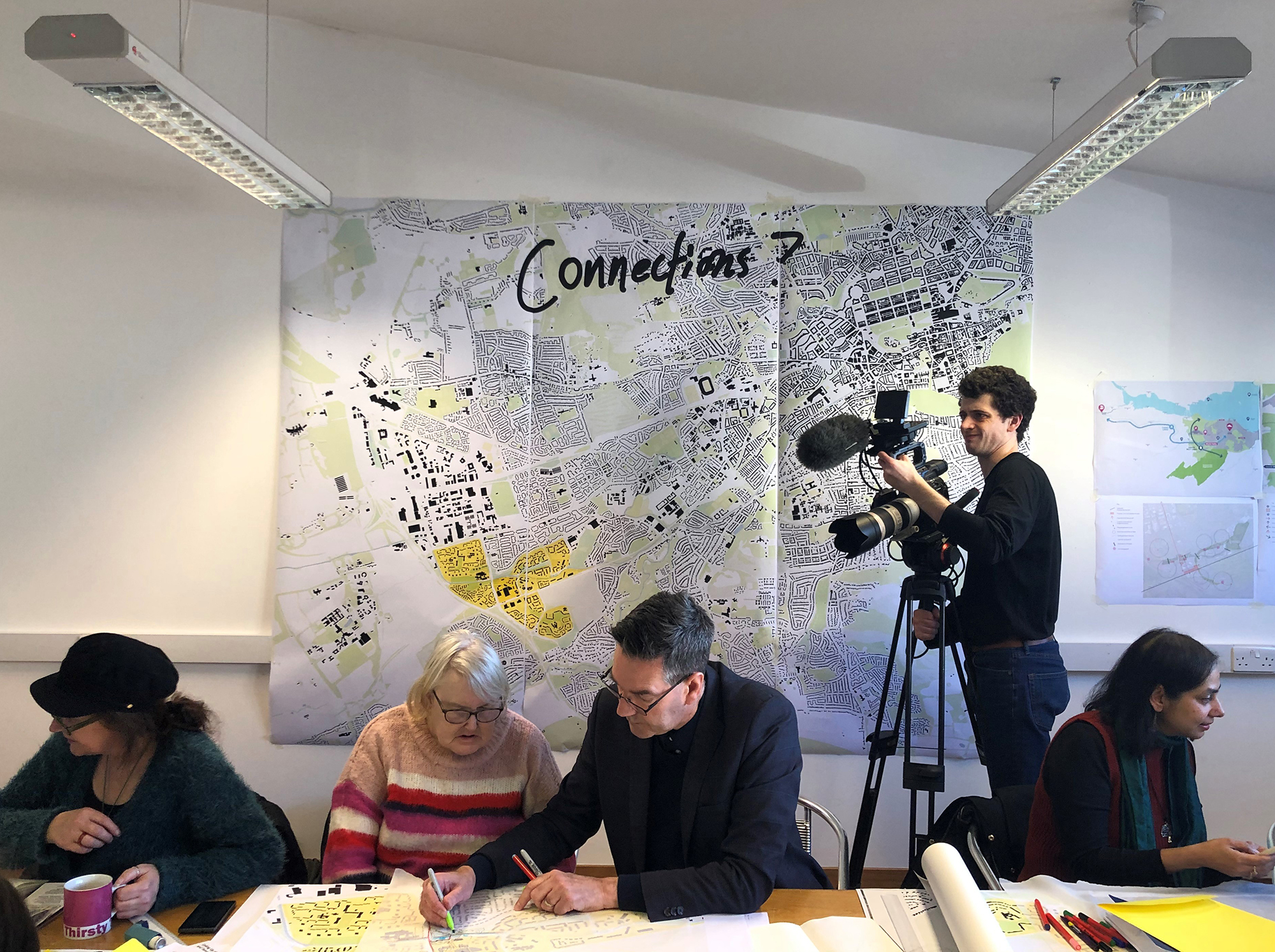
WHEN the citizens of Wester Hailes were asked about their wishes for their community in ‘What If…? Scotland’, discussions frequently came back to the same building, a derelict petrol station opposite the main shopping centre.
However, the wishes were about more than a building, they were about making connections. Could the old petrol station become a point of connection for the different communities in this multicultural neighbourhood? Could a footbridge be built across the nearby canal, connecting Wester Hailes to a popular walking and cycling route? Could a green space be created beside the canal for the community to enjoy?
Sense of disconnection
These wishes address one of the key underlying issues in the area since Wester Hailes was built in the 1970s. Perched on the south western edge of Edinburgh next to the bypass, it has long felt a sense of disconnection, both from the wider city and between the disparate parts of the community.
Eoghan Howard, chairman of Wester Hailes Community Trust, a long-time resident of the area and a participant in What If…? said: “The petrol station has been talked about on previous regeneration projects and nothing has been taken forward, so people homed in on that.
“The canal runs just past the shopping centre, close to the petrol station, but you can hardly see it. If the petrol station could become a cafe, for example, the market for that could be internal and external, connecting up with the pedestrian and cycle route to attract people in. Now there is interest from the Council and the community in that petrol station. It’s very exciting, and it’s much less likely to have happened without ‘What If…?’”
Momentum
Currently, in Wester Hailes, the watchword is “momentum”. When the area was chosen to take part in ‘What If…?’, a Local Place Plan — a community-led regeneration plan which will be formally registered with the local council — was already underway. Improvements to the local shopping centre, Westside Plaza, were planned, and have now been completed, and a new cycling route through the area has been introduced by Sustrains. Now, Wester Hailes is subject to a larger strategic regeneration masterplan commission by City of Edinburgh Council.
Ian Gilzean, Scotland’s chief architect, who led the first phase of the Local Place Plan in Wester Hailes, said: “There’s a lot of momentum to what’s happening in Wester Hailes, not just the Local Place Plan, which is now in its second phase, funded by the Council, but this bigger strategic masterplanning exercise which is underway. There’s a lot of potential that the two different processes will come together and give a long-term plan for change and investment, with the community involved in the process.”
Confidence
Eoghan Howard knows that the ideas which have come from ‘What If…?’ – the footbridge, the transformation of the petrol station – are big ideas. He said: “There’s still a lot of work to do, and a lot of conversations to have. We’re keen to avoid the trap of a grandiose building, which is expensive to run and ends up becoming a white elephant. And we don’t want to duplicate what is being offered at the smaller community hubs in Wester Hailes or direct resources away from them.”
However, he is aware of another shift, that ‘What If…?’ has stimulated interest across the wider community. “It was a very pleasant surprise to be told we were participating in the Venice Biennale, and then to have our ideas on the walls of the V&A Dundee. It immediately brought confidence to the area.”
Leah Black, chief executive of WHALE Arts, a community-led Arts charity and social enterprise at the heart of Wester Hailes, said the project was important because of the way it invited citizens to take part in the discussion.
She said: “If you’re an activist or staff member, you are used to your ideas being taken seriously. This was a chance to widen that out, to invite people who wouldn’t have considered being involved. There have been discussions with professionals – funders, architects, the Scottish government – but this project couldn’t have happened without residents. Their ideas were in the V&A: that builds confidence, and inspires people to get more involved in their own community.”
Read more about What if…?/Wester Hailes here.
Image by 7N Architects, taken in 2020 during the initial workshop in Wester Hailes.

